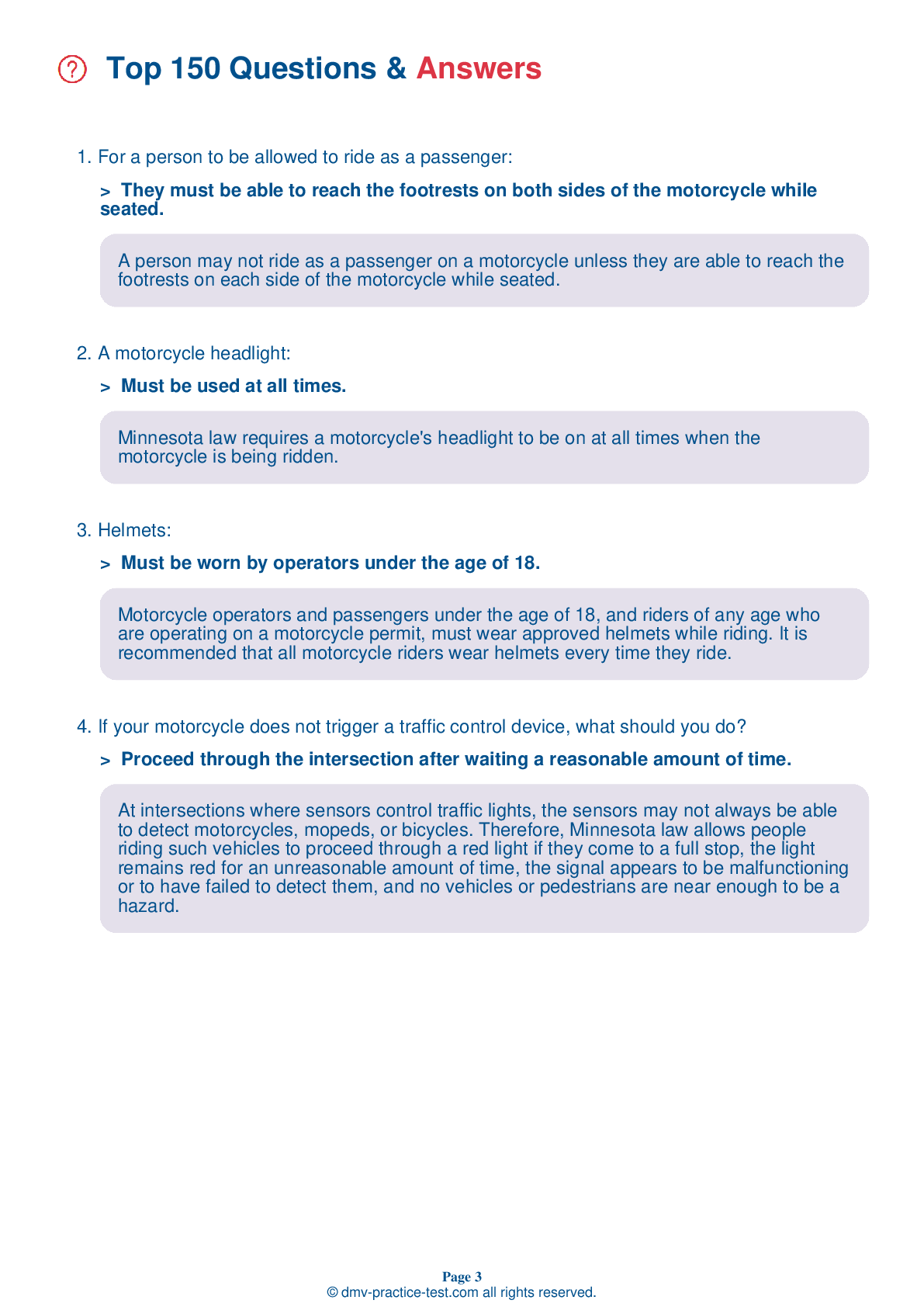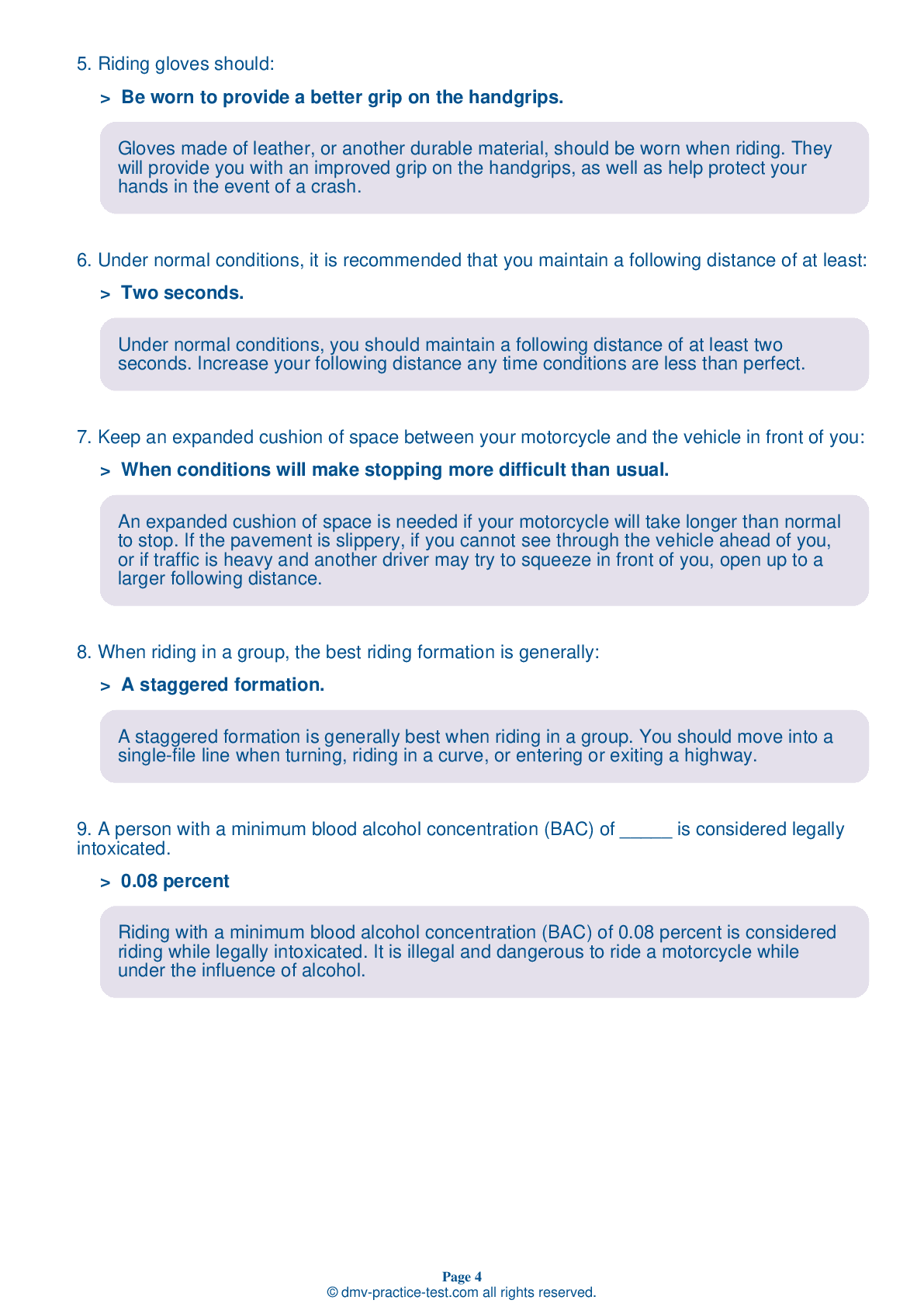Motorcycle Test | License MN 2025 | FREE Online Practice! #8 Page 4 of 5
Take this FREE motorcycle test (license in MN 2025) to check your knowledge of the road rules. To improve your results, download a motorcycle handbook online, study theory, and practice for free on our website. Still worried about how to get a motorcycle license in Minnesota in 2025? Check our website for more sample tests, train as much as possible, and boost your grades!
25 . Motorcycles:
Motorcycles have blind spots, just like any other vehicle. Always turn your head to check your blind spot before changing lanes. Head checks should be a regular part of your scanning routine.
26 . Which of the following is not a factor in determining blood alcohol content (BAC)?
The three major factors that affect a person's blood alcohol content (BAC) are the amount of alcohol consumed, how fast the alcohol was consumed, and the drinker's body weight. It is illegal and dangerous to operate a motor vehicle while under the influence of alcohol.
27 . When parking a three-wheeled motorcycle on the side of the road, it should be:
Because of the limitations on mobility and motorcycle length, it is not practical to park your three-wheeled motorcycle on the side of a road at an angle with your rear wheel touching the curb, as you would with a two-wheeled motorcycle. Position your motorcycle in a parking space so you are parked parallel to the curb and set the parking brake.
28 . When preparing to pass another vehicle, you should ride in the left portion of your lane because:
When preparing to pass on the left, you should ride in the left portion of your lane, both to increase your line of sight and to make yourself more visible to drivers already in the passing lane.
29 . When riding a motorcycle and trying to turn, you should:
When traveling faster than a walking pace, your motorcycle will need to lean to turn. Pressing the grip in the direction you want to turn will cause you to lean in the appropriate direction
30 . Riding gloves should:
Gloves made of leather, or another durable material, should be worn when riding. They will provide you with an improved grip on the handgrips, as well as help protect your hands in the event of a crash.
31 . A rider's lane position should:
When in an ideal lane position, a rider is visible to other drivers while avoiding wind blasts coming from other vehicles.
32 . When approaching multiple hazards at one time, you should:
When approaching multiple hazards at one time, you must be able to identify and separate the hazards. If possible, react to and safely pass one hazard before dealing with the next.
See the exact questions that will be on the 2025 Minnesota DMV exam.
99.2% of people who use the cheat sheet pass the FIRST TIME
Jeneen was tired of paying $5/gallon. She got herself a scooter that required the motorcycle license. She studyed the motorcycle test cheat sheet and passed her test the next day!
Christopher tells us how he knew nothing prior to obtaining the motorcycle study guide, and he only got one question wrong because he clicked on the wrong answer by mistake.



